
Drawing on the past
Glass artist Mathieu Grodet has combined his love of drawing with several different glass techniques, most recently settling on the creation of murrine as a vehicle for his painstaking designs, many of which capture significant quotes and phrases. Linda Banks finds out more.
You have a background in drawing and illustration. What led you to start working with glass?
While I was studying illustration and drawing in the late 1990s, the world was shifting to digital, with computers in many homes. When I started working with glass, the trend was not to work with your hands but to go towards the new El Dorado – the tech revolution. So glass came into my life just when I was looking to escape from the digital ‘promised land’. Working with my hands to create objects seemed much more of an engaging, fun challenge and possible future for me as an artist.
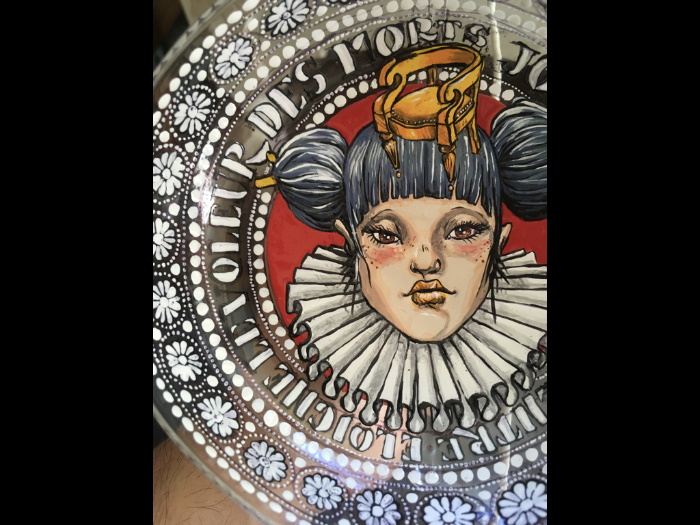
What glass techniques have you used and which do you prefer?
I began my journey by immersing myself in the hot shop to learn glass blowing. Initially, I created goblets using the Venetian technique. As I wanted to make them unique, I started to transform them with a Dremel tool, engraving them with my own original illustrations.
Later I learned the enamel method of painting on various glass shapes and I was able to make my illustrations more fanciful and full of colour. While it gives an alternative way to express oneself on glass, the enamel technique can be time-consuming and technically difficult. The firing process can be stressful and mistakes are unfixable. In one instance, three months of work on one piece was botched after an issues with the firing. I haven’t worked with enamel since, but I will come back to it eventually, as it does give so much artistic space.
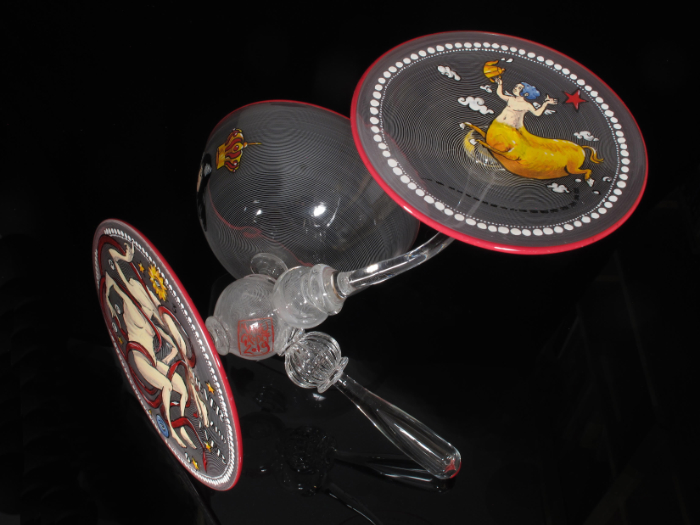
In parallel with glass blowing, I learned flameworking. I quickly discovered it was far easier to put together a small flameworking studio than a hot shop and I began with beads and small sculptures.
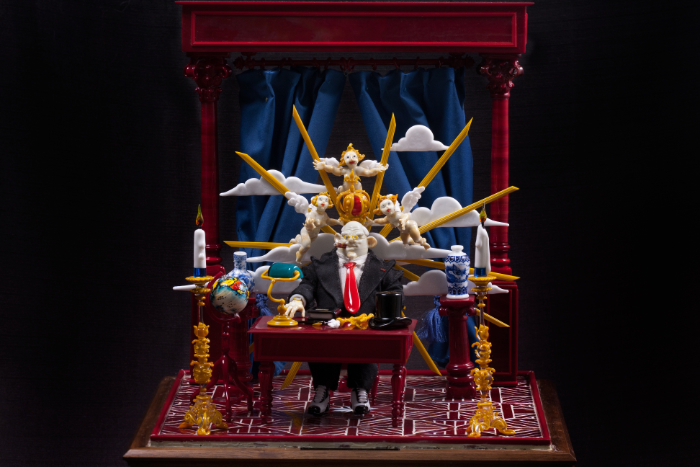
At Loren Stump’s Corning Museum of Glass workshop, I learned the ancient technique of murrine. When the pandemic hit, I finally had some time off from teaching to focus on flameworked murrine at home. Now I spend a lot of time in my studio focusing on this method.
Glass blowing will always have a special place in my heart. Your entire body is needed to work the hot shop and I love the physicality of engaging with fire and water – it is playing with terrestrial forces – something bigger than us.
However, now I am enjoying the art of murrine and its technical and strategic aspects. It is like building a house; you need to carefully plan every steps over weeks. It also involves other diverse techniques, such as cold working, marquetry and mosaic. I feel in uncharted territory on the murrine planet. It is like I can barely see in the dark and am going forward with a lamp torch. I don’t know where I am going and I love that. I feel like a researcher, an explorer and maybe I’ll discover treasures on the way.
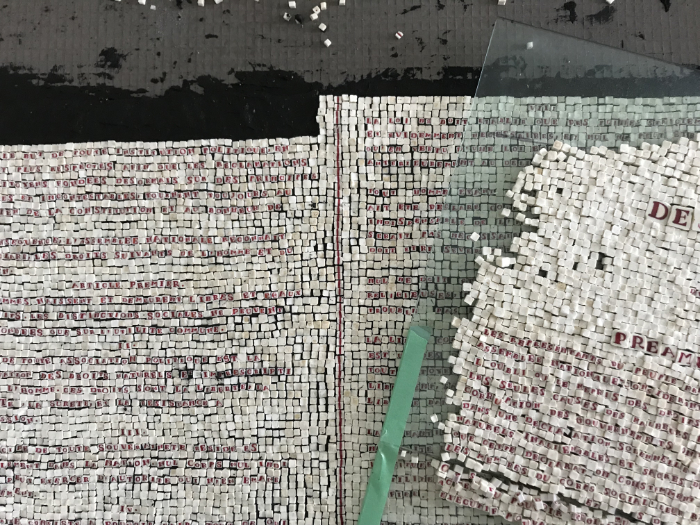
What is your creative approach? Do you draw your ideas out or dive straight in with the materials?
I like to draw inspiration from many sources – I listen to French radio and podcasts and read new and classic books. I write down lyrics, quotes, conversations etc, and all is blended with sketches and drawings of ideas that I have in my notebooks. I keep coming back to the notebook as a safe line.
Over time, most of my illustration work has merged with my glass practice, with both feeding each other. I have many ideas and sketches in my notebook, and not all of them are good, so it can be difficult to select which idea to dive into next. I can spend weeks thinking about the next project. Lately, I am even using geometry tools, such as a protractor or compass, to be more accurate with the murrine – tools I used to consider too authoritarian and academic.
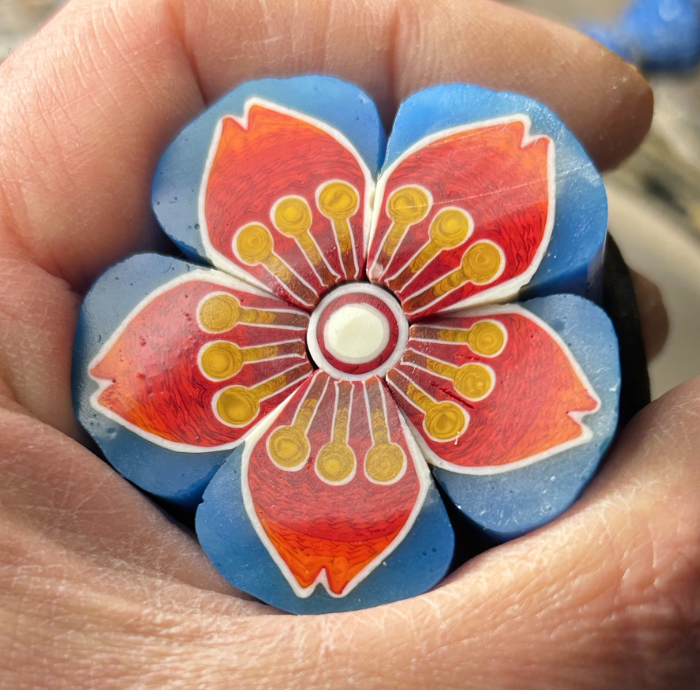
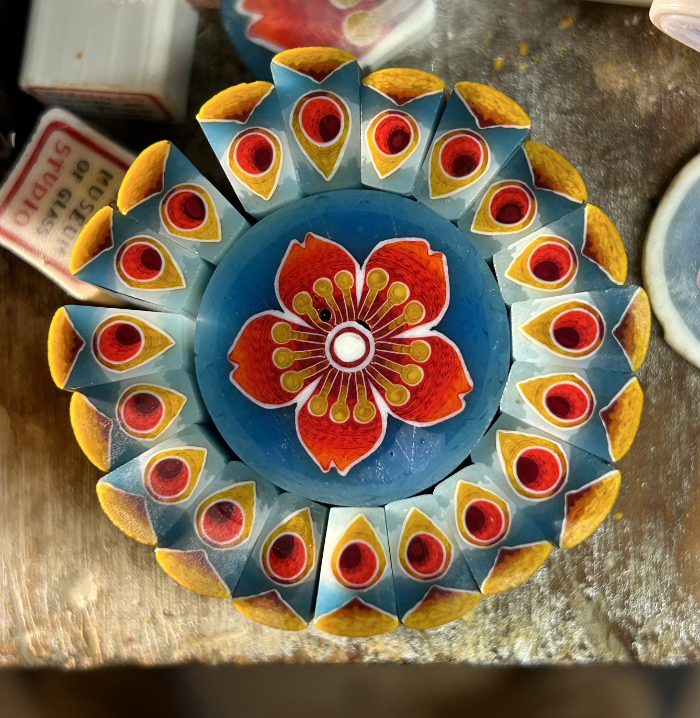
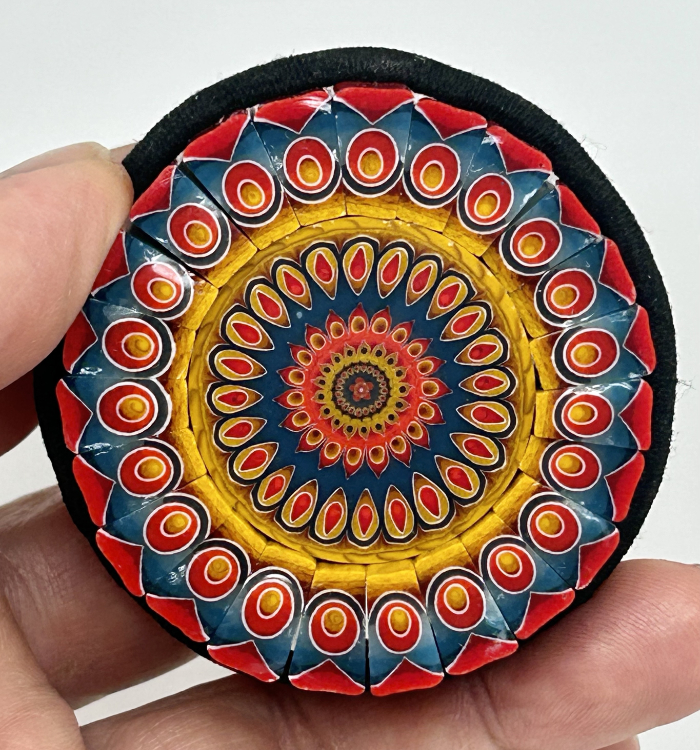
What inspires your work?
I am inspired mainly by the past, especially objects – the older the better.
I am fascinated by thinking about people like us 1000 years ago and what they would be doing in their day-to-day lives. When I am in a museum, I think about the makers of the objects – why they created them and what the context was for those men and women to produce such work.
I like looking back to learn, to try to decipher patterns and modes.
At the end of the day, we all talk about time and how we can try to hold on to it, don’t we?
What message(s) do you want to convey through your art?
This is a big question but I hope my work inspires people to discover and question.
In some of my latest work, I have actually relayed a lot of the messages of others through my work – from interesting thinkers and artists, like Percy Bysshe Shelley, Malcom X, Howard Zinn, David Bowie, George Orwell, Pussy Riot and Rousseau.
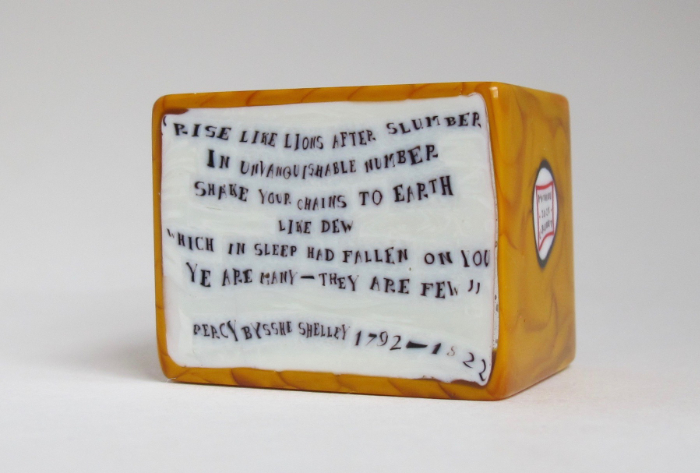
Text is a very effective way to carry a message and those people are far more talented with words than I am. It is also very comfortable and convenient for me to use their words to carry the old message of freedom.
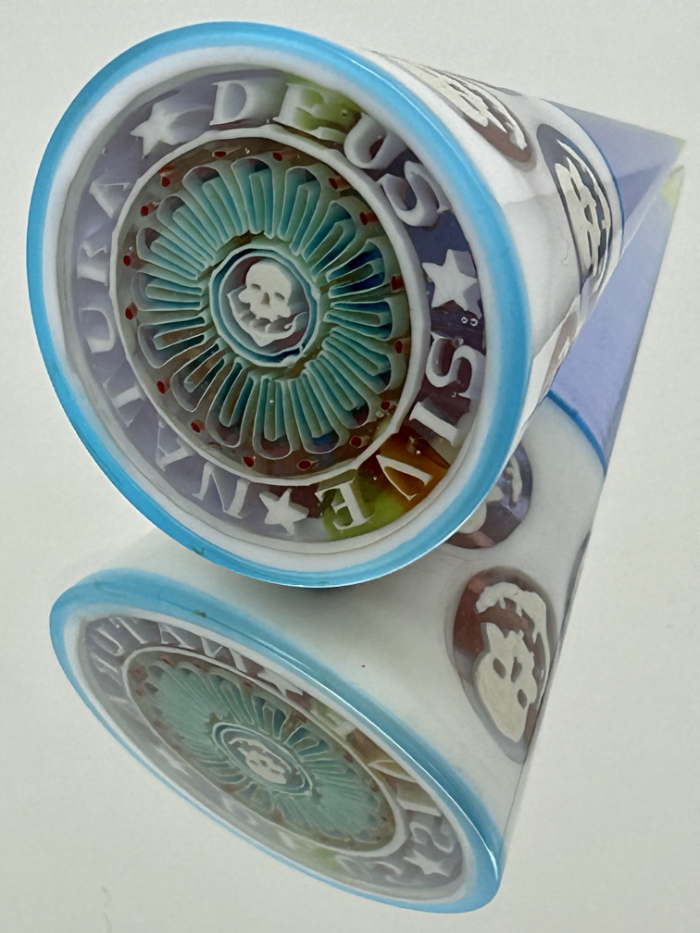
What is your favourite tool or piece of equipment and why?
The jacks tool. It looks simple but it is quite intricately designed and can be used in so many ways. It is so effective and means I can achieve an incredible range of shapes. It is like a blend of chopstick and sword. It gives level and leverage and is the ultimate guide – wise and always reliable. When applied to the rotating glass, it can feel like riding down a snow slope on skis.
Do you have a favourite piece you have made? Why is it your favourite?
I have a deep affection for a recent murrine I made with a Goethe sentence saying, ‘Nothing is worth more than this day’. It is in a round format and I think this is how to live and the circle is done. What else is there to say?
Where do you show and sell your work?
I show and sell my murrine work online through social media, as the pandemic pushed me to move online. I have some bigger work represented at the Sandra Ainsley Gallery in Toronto, Canada.
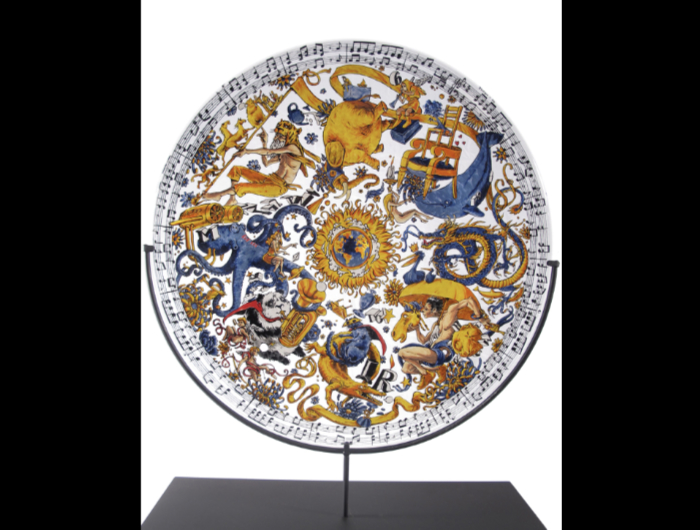
What advice would you give to someone starting out on a career in glass?
I would say go and learn with the artists you love and learn their techniques. Another suggestion is to explore the networks to sell that type of work. It is also great to attend gatherings, conferences and other events in this small glass world; it is good to meet the players, as it is all about human contact.
Do you have a career highlight?
I hope it is still to come. Also, when my glass doesn’t break.
Where is your glass practice heading next?
Though I am not completely certain, there is a mix of anxiety and excitement of going in the direction of murrine. I feel enough challenges have been raised with the murrine to keep me busy for a while. I hope to get back to the hot shop to use the murrine in conjunction with bigger pieces like bowls or goblets.
Is the global energy crisis affecting your practice?
With my oxygen concentrator, I produce the oxygen I need with a small amount of electricity. The use of propane is also fairly low with soft glass, so I am not that directly affected by the global energy crisis. That said, the glass factory in Venice that I buy my glass from is heavily affected. This may make the price of glass rise in the future. For me this is not good news, as making murrine uses a lot of glass.
And finally…
The history/story of murrine still needs to be written. It is an ancient way of producing images as the Egyptians did and it has been forgotten for too long. For those who have the time, it is a fascinating technique to explore. The possibilities are endless and, in a way, it is just the beginning of something very old.
About the artist
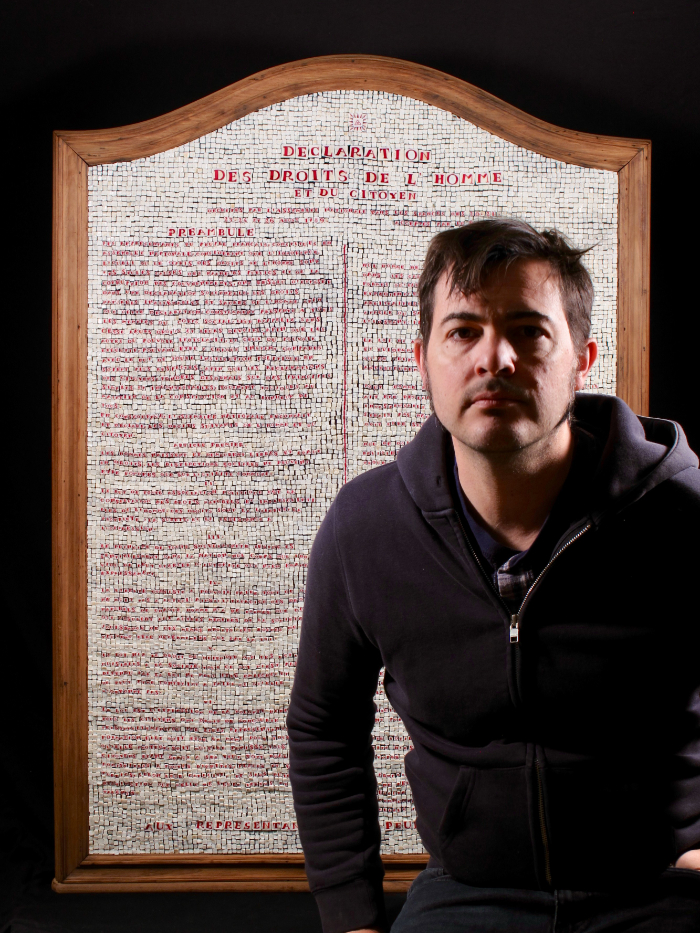
Mathieu Grodet is a glassblower, flameworker and illustrator born in Orleans, France. He lives and works at his studio in Killaloe, Canada, creating pieces that bring the past of glass together with themes of the present using traditional techniques with a modern twist. He marries and reconstructs form, function and design with the aim of creating a discussion.
Mathieu also lectures and teaches glassblowing, flameworking, and enamelling techniques. He has conducted workshops and demonstrations in China, Japan, Turkey, Ireland, Canada and the US.
His work is in private collections across Europe and North America and it can be seen at the Corning Museum of Glass and the Art Institute of Chicago.
Find out more via his website https://mathieugrodetglass.com/ or follow him on Instagram: @Mathieu_Grodet_Glass
Main feature image: A quotation from the 13th century mystic and poet Rumi created in murrine.